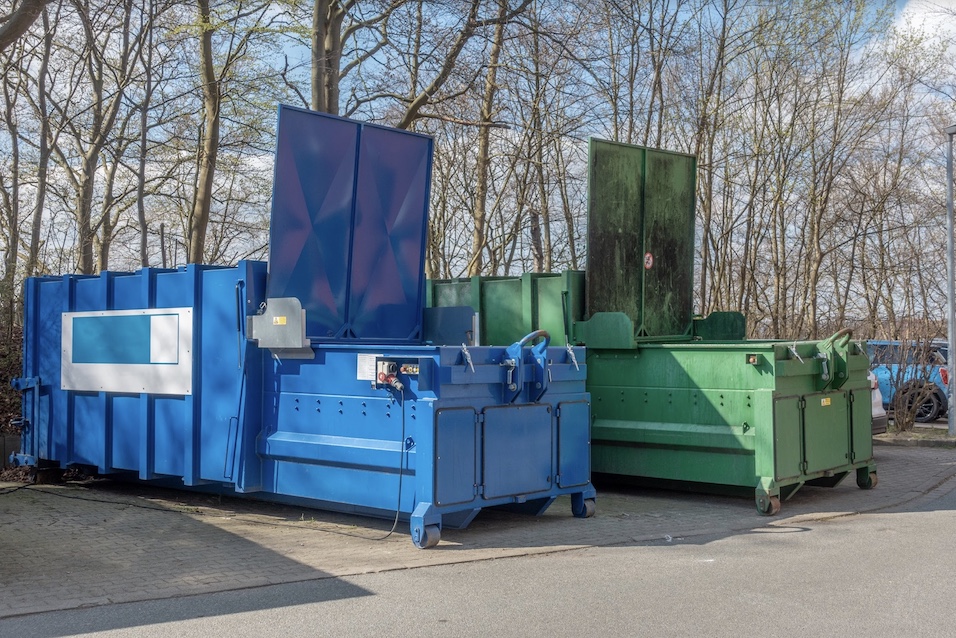According to the World Bank, as of 2020, the world was estimated to produce about 2.4 billion tons of solid waste per day. These numbers are set to rise, given the increase in waste generation.
As a result, individuals and organizations have been urged to practice sustainable waste management. It involves reducing the production of waste and reusing and recycling it. One of the methods of sustainable water management that are being used by businesses is the use of waste compactors.
There are different types of Commercial Compactors depending on the waste your business produces. Therefore, it can be challenging to know which compactor will serve your business best. This article has put together a step-to-step guide to help you select the right compactor for your business. Keep reading to learn more.
What Is A Waste Compactor?
A waste compactor is an equipment designed to crush your waste into smaller volumes. Ideally, a waste compactor can compress waste to about a fifth of its initial volume. This means that the storage capacity of the waste container is increased. Additionally, the waste becomes more manageable for transportation to recycling centers.
Aside from these, here are some more reasons why businesses should invest in a waste compactor:
The less the volume of waste there is, the fewer trips are needed to transport the waste. Therefore, a waste compactor reduces the cost of transport since you only have to transport the waste when the storage capacity is completely exhausted.
Waste compactors also help save on the cost of disposal, such as landfill tax. When the volume of waste is reduced, so is the amount of waste that can’t be recycled. Therefore, since a landfill tax is charged per volume, a reduced volume of waste means a lower disposal cost.
- Reduces Carbon Footprint
When the number of trips to collect waste is reduced. The level of emission is also reduced. This, therefore, reduces your business’ carbon footprint. Today it’s crucial that your business contributes more to ending climate change than making it worse.
Customers today prefer to associate with environmentally friendly organizations and businesses. You can be environmentally friendly by using green energy, replacing plastics with decomposable material, becoming zero waste certified, or even lowering your carbon footprint. That said, identifying an environmentally friendly business could lead to more business and higher revenue.
- Waste Collection Is Streamlined
When waste is collected in a regular container and dumped in a dumpster, there’s likely to be a mess. Some of the trash may fall from the container, and sometimes the container may overload. This creates conditions where pests and disease-causing organisms thrive. Such conditions put your health and that of your entire business community at risk.
However, with a compactor, storing, collecting, transporting, and dumping the waste is quite streamlined. It helps to free up space for more operations. Additionally, it helps create a clean, healthy working environment.
- It Requires Less Human Labor
Waste compactors have the bin tipping feature that reduces manual handling. Other advanced compactors can self-clean, which also means that you’ll cut down on human labor that would have been used to clean and maintain the compactors. This allows your employees to be more productive in other pressing issues that profit the business.
Choosing The Right Compactor
As you have seen above, the benefits of a waste compactor in business can’t be assumed. It directly affects the efficiency and cost of your business. You, therefore, want to make sure that you choose the right compactor. The following guide will help you achieve that.
Step One: Know The Type of Waste Your Business Produces
As mentioned before, there are different types of waste compactors. The compactors depend on the type of waste they’re designed to compress. Therefore, the first thing you want to know when choosing a good commercial compactor is the type of waste your business produces.
A standard waste compactor will serve you best if your business produces solid waste, such as plastics, metal, and cardboard. On the other hand, if your business produces wet waste, such as food remains, a wet waste compactor will be your best choice. Wet compactors are usually completely sealed, making them the best fit to manage odor from wet waste.
Last but not least, a roto-compactor will work well for all your general waste that can’t be recycled. A roto-compactor can compress waste up to nine times its initial volume. It’s, therefore, resourceful equipment for businesses that produce a lot of waste.
Step Two: Determine The Volume Of Waste Your Business Produces
Compactors come in varying sizes and complexity. The bigger the compactor, the more expensive it is. As such, you want to make sure you purchase the correct size. Buying a compactor that is too large may be a waste of money while buying one that is too small means that your waste management won’t be efficient.
To determine the size of waste compactor your business needs, you first have to know how much waste your business produces. If you haven’t kept tabs on the volume of waste your business produces, now would be a good time. Jot down how much waste your business produces for one to two weeks. Once you have the data, you’re better informed to choose the correct size of waste compactor your business needs.
Step Three: Choose The Right Size Of Waste Compactor
Other than the volume of waste your business produces, other factors determine the size of the waste compactor you’ll purchase. They include:
- The Amount Of Space You Have
Waste compactors can take two forms, horizontal or vertical. The horizontal waste compactor is your best fit if you have ample space where the compactor will be working from and stored. A horizontal compactor is bigger; hence it requires more space. However, it also compresses larger amounts of waste at a go compared to the vertical compactor.
The vertical compactor is smaller, making it suitable for limited space businesses. As mentioned before, the only disadvantage is that it compresses a limited amount of waste at a go.
- Safety Of The Equipment
It would be best if you considered the safety of your equipment. A waste compactor is an expensive piece of equipment. If stollen, it can financially set back your business. Therefore, you want to ensure you have the resource to store it safely before deciding on the size of the compactor you’ll purchase.
Safety also includes considering the environmental and working conditions of the compactor. For example, a metallic waste compactor shouldn’t be exposed to moisture, leading to rust. You, therefore, want to place it in a secure place with shade.
Safety also regards the health and safety standards of having the compactor. Since the compactor is strictly meant to compress waste, it must be placed away from places where it can contaminate food and other consumable products, especially for businesses that deal in manufacturing.
Step Four: Ask About The Lifespan Of The Compactor
As long as your business is functional and producing products and waste, your waste compactor will be running. Therefore, you should choose a quality waste compactor that can withstand working consistently without needing repairs often. To do that, you must research the lifespan of the compactor you want to purchase.
You can research online or ask other business owners who have used it before. Sometimes if you’re dealing with trustworthy sellers, you can ask the seller about the lifespan of the waste compactor. Go for the compactor that will last longer. Although it will probably be the most expensive, you’ll still get the value for your money.
Step Five: Consider Taking Safety Precautions
A waste compactor is made of heavy machinery that goes up and down when compressing waste. These machines can easily crush a human being’s bones. Therefore, those handling the machine must be properly trained in controlling it and the safety precautions to take.
According to experts, when choosing a waste compactor, go for one that’s almost entirely automated. It requires very minimal manual work. However, there isn’t a single waste compactor that is fully automatic. It’s, therefore, necessary that you conduct safety training for the team that will be handling the machine.
The machine training should also include the procedures to follow when handling different types of waste. This will help avoid dangerous scenarios, such as exposure to toxic chemicals from hazardous waste.
Step Six: Consider The Local Regulations
Some states have regulations on the volume of waste per recyclable unit a business should produce. For example, for every 1000 grams of waste, 500 grams should be recyclable. Such regulation directly affects the type of waste compactor you’ll purchase.
There can also be regulations, such as each business compactor should have some specific features. When purchasing your waste compactor, keep these regulations in mind and be sure you adhere to them.
Wrapping It Up
A waste compactor is an equipment used to compress the volume of waste to reduce it into small volumes that can easily be stored and transported. There are different types of waste compactors available. As such, purchasing a waste compactor may be challenging for someone still new to this technology. However, this article has detailed a step-to-step guide on how to select the right waste compactor. Apply the steps to start your journey of sustainably managing your waste.










